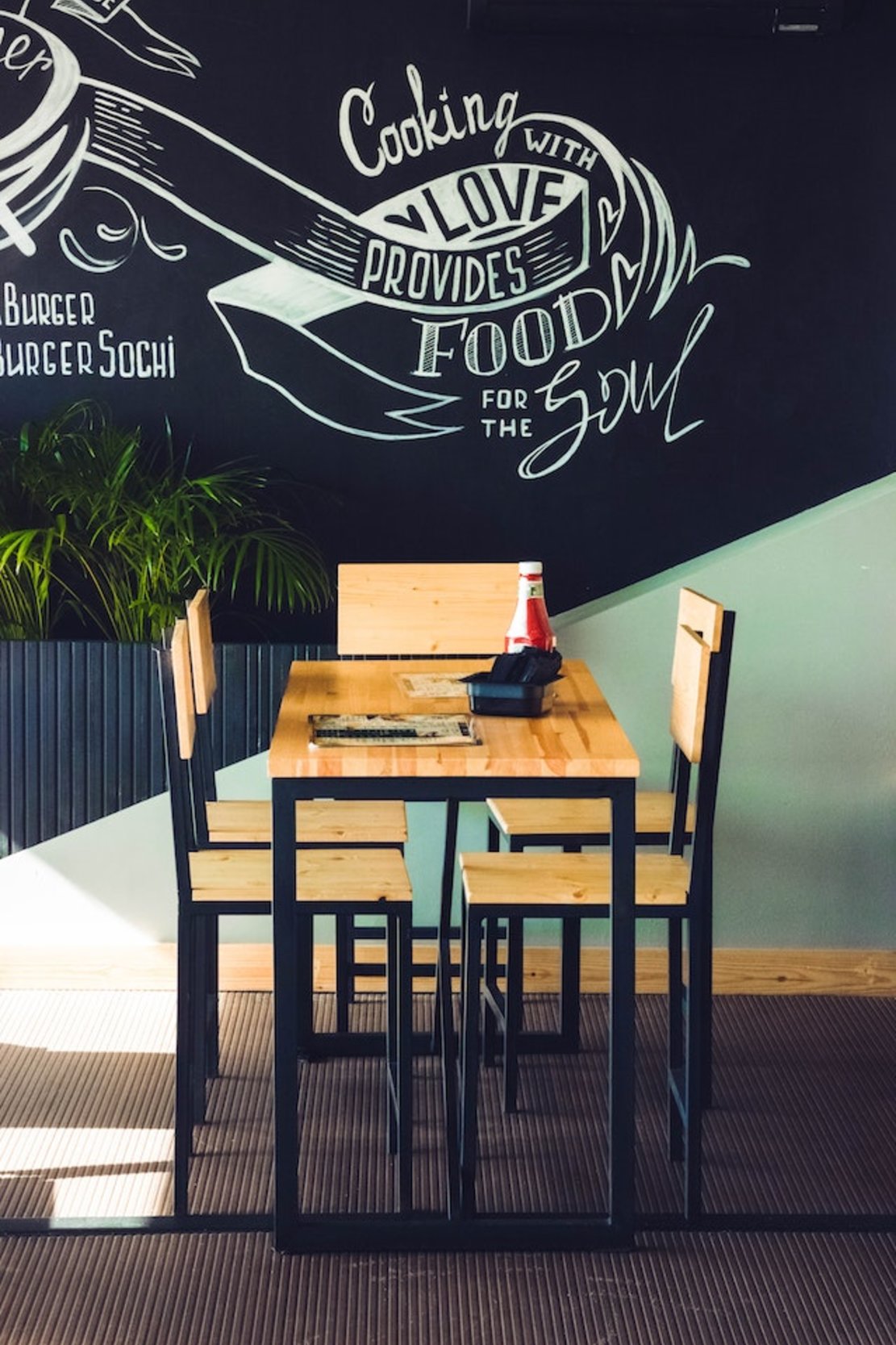One of the primary data points that restaurant owners focus on is their average restaurant profit margin. Aka, the average amount of profit their establishment makes.
They want to know how their business is doing and how it stacks up to the industry standard. However, profit margins vary broadly depending on the type of restaurant you run or the service offered.
So how do you get the most out of understanding restaurant profit margins? In this article, we’re breaking down profit margins by type of restaurant and general industry trends. We’ll also cover the following:
- What is the average net profit margin for any establishment?
- How to calculate the profit margin and other relevant metrics for business owners.
- The most important factors that affect the profit margin of a restaurant.
- What you can do to improve restaurant profit margins.

What Is the Average Profit Margin for a Restaurant?
The average profit margin for a restaurant is usually between 3 to 5%. However, that’s only the average. That means some restaurants have profit margins that are as low as zero percent. Others have profit margins as high as 15%.
A restaurant’s profit margin depends on several different factors, including (but not limited to):
- Labor costs. How much does paying workers and the labor that goes into creating food and keeping the business running cost?
- Food costs. How much do the produce, meat, and other meal ingredients cost?
- Menu prices. How much is the cost of goods sold? What price tag can you put on a dish before you lose customers?
- Location. A restaurant in rural Tennessee won’t make as much money as one in downtown Nashville. However, it’s cheaper to run. How does your locale affect your gross profit margin?
- Overhead expenses (also known as operating expenses). What other expenses must you cover to keep your restaurant alive and well? Operating costs like renting a space, electricity, and gas all count as restaurant expenses.
- The type of restaurant. The net income of a steakhouse isn’t the same as that of a hot dog stand. Think of your industry niche. Then, focus on what that market looks like instead of comparing yourself to those outside it.
- The economy. The last few years have been especially brutal for the restaurant industry. Economic fluctuations will affect the ups and downs of the average profit margin for restaurants.
Average Restaurant Profit Margin by Type of Establishment
As mentioned above, your eatery’s average restaurant profit margin depends on various conditions and factors. However, the type of restaurant you own is the most relevant.
Why? Because you need to be comparing apples to apples. You want to know the total revenue and sales for your specific culinary genre and restaurant style.
If you haven’t opened your business yet, you can pick one with the most reward for the least effort.
You can make better decisions for your venture with a clear picture of profit margins for that establishment.
Here is a list of the average restaurant margins by type of establishment.
Average Restaurant Profit Margin: Full-Service Restaurant
Full-service restaurants usually have a 3-5% profit margin, consistent with the industry average.
Therefore, if you’re heading into that sector, your results should be similar to the typical restaurant profit margin. Does this mean you can coast, banking on your restaurant’s profit margins matching that average? Of course not. The size, location, business model, and turnover rate could massively increase (or decrease) that figure.
Average Restaurant Profit Margin for a Cafe
Some folks believe that cafes are a low-risk way to enter the restaurant industry. Why? Because a coffee shop could enjoy 10% profitability without considerable effort.
That’s because cafes have less food costs, supplier expenses, and labor costs than a conventional full-service restaurant.
On top of that, they’re increasingly popular among Millenials, Gen Z, and remote workers in general. This is a lucrative opportunity if you have clever coffee shop marketing ideas like using social media to promote your cafe.
Average Restaurant Profit Margin for Fast Food Restaurants, Quick Service Restaurants, and Ghost Kitchens
Fast food restaurants tend to have less staff required, cheaper foods, and smaller retail spaces. This is because of the high turnover rate of the business.
As a result, the average restaurant profit margin for fast food restaurants and quick service restaurants can vary between 6-9%.
Nonetheless, don’t assume that fast food restaurants are simple businesses. The ones that succeed only do so because they’ve optimized their process. They’ve found a way to churn out satisfactory food and beverage items at a low cost of goods sold quickly. This is hardly ever a restaurant model for newcomers.
A ghost kitchen, instead, is a relatively new concept.
These are private commercial kitchen spaces to prepare menu items for delivery and takeout. Businesses or individuals can use these spaces to create only food available on delivery apps, separate from a brick-and-mortar restaurant.
These are made possible thanks to abundant food delivery demand and services.
On the surface, this sounds like the ideal setup to raise restaurant profit margins. After all, you don’t have to worry about seating, waitstaff, and the associated costs. Ghost and virtual kitchens have lower labor costs and operating expenses.
They might even enjoy other perks like reduced food waste and food costs. But they still have to pay rental fees for using the ghost kitchen space and deal with delivery app fees.
Apps like DoorDash, GrubHub, UberEats, and Caviar all charge a commission fee t other restaurants that use them. According to the LA Times, those fees can be up to 30% on a sale.
Still, thanks to fewer staff requirements and the absence of a dine-in option, cloud kitchen profits get close to 10%.

Average Restaurant Profit Margin: Catering and Food Trucks
Regarding the average restaurant profit margin, you might not think a food truck is one of the most profitable options.
On average, food trucks enjoy a 6-9% profit margin. However, this number can grow higher if you take advantage of the unique features of your truck.
The main advantage of a mobile food business is the mobile part. You can “move” your entire business in no time and reach the best locations and opportunities.
Is there a concert in town? Is there a marathon somewhere nearby? No matter what, you can get there with a truck and take advantage of the built-in customer base.
Additionally, a mobile food business doesn’t need many employees. And with the right food truck advertising, you can improve its performance astronomically.
Catering businesses like food trucks have low overheads, but their food costs match full-service restaurants.
As a result, the average profit for catering businesses is usually around 8%.
However, catering services can be arduous to run. Depending on your customer’s desires, they involve coordinating many employees, venues, suppliers, and other vendors.

The Average Profit Margin for a Pizza Restaurant
Starting a pizza restaurant is a dream for many people. Having a pizza restaurant for a living sounds fun and joyful. Additionally, you get free pizza any time you want. That’s such a perk.
If you are wondering what is the average restaurant profit margin for a pizza joint, you might be pleasantly surprised. Pizza restaurants reach, on average, a 15% profit margin.
Although making a pizza takes skill, you can standardize and optimize all the processes for running this type of restaurant.
Think of the last time you visited a pizza parlor and peaked in to see a well-oiled assembly line. Someone’s tossing the dough, handing it to the toppings station, and then it’s off to the oven.
Moreover, the core ingredients of the pizza bread are relatively cheap: flour, yeast, water, and salt. Then, the toppings give you enough space for creativity and for offering high-end pizza.

How To Calculate an Average Restaurant Profit Margins
Don’t worry, restaurant owners. The mathematical formula to calculate the average profit margin for restaurant owners is a simple two-step process.
First, you have to calculate your net profit. Your net profit is the same as your net income. It’s how much money you’re making after expenses.
That formula is:
Total Revenue - Total Expenses = Net Profit
Once you have that, you can find your restaurant’s net profit margin this way:
(Net Profit ÷ Total Revenue) x 100 = Net Profit Margin
This shows you what percentage of your business’s total money (or revenue) your business rakes in is actually a profit.
Then, to see how your restaurant’s performance stacks up to the industry, you can check out profit margin research databases. Each quarter, compare your numbers to the data to identify improvement areas.
Is an average restaurant profit margin important? Yes. But you can’t look at the number alone. You have to have context and know other metrics to understand your restaurant’s financial health.

Beyond the Average Restaurant Profit Margin: Other Relevant Metrics To Consider
Always remember that a restaurant average profit margin is an average. Not only that, but it’s the result of many different people’s business processes and decisions.
Although knowing this raw number is useful, other data is worth checking. The following are the most relevant metrics to understand and calculate:
Cost of Good Sold (COGS)
The cost of goods sold captures all the costs related to the production and sale of your product. This includes ingredients, labor, tools, and other expenses for creating your dishes.
Earnings Before Interest and Tax (EBIT)
This number includes all the revenues and expenses of your business, excluding taxes and interests.
To calculate it, the formula is:
Revenue – (COGS + Operating Expenses) = EBIT
EBIT shows how your restaurant business performs independently, without outside influences like interest rates and taxes. This is an excellent way to see how much profit you’re earning with your current strategies.
Calculating the EBIT exposes anything affecting your profitability. From here, you can identify unnecessary costs in your hospitality business.
Revenue per Seat (RPS)
Although not all restaurants have seats or a stable location, revenue per seat is a critical indicator for many. It tells you how much money each seat in your establishment produces. To calculate this number, the formula is:
Revenues/seats = RPS
You should measure these metrics on different days or hours to understand what affects this number. Then, you can test strategies and verify what increases your bottom life. This data allows you to benchmark your restaurant with the more profitable ones in your niche or area.

Average Restaurant Profit Margin: What Factors Affect It the Most?
Understanding what influences restaurant profit margins is critical to making informed business decisions and evaluating the potential of your initiatives.
Once you know which factors matter most, you will understand how to get an edge.
As mentioned before, the average restaurant profit margin varies massively depending on the type of restaurant and business model. The location is a fundamental factor in the average profitability of a restaurant.
A restaurant with a large footfall will have a higher profit margin with a high turnover strategy.
Instead, a restaurant located in a luxury area might not experience high traffic. However, it can charge more than a restaurant in a common area because of its location.
Another factor that affects the average profit margin of a restaurant is the type of cuisine. For example, gourmet fare typically has a higher profit margin than those serving more casual fare.
Last, what affects the average profit margin of a restaurant is its customer base. You will attract a particular type of customer depending on your business identity and style.
For example, let’s say you own an eco-conscious vegan restaurant. You’ll likely attract consumers willing to spend more for a high-quality, conscientious meal.
They’re more likely to feel empathetic towards your workers and be willing to pay more to cover labor costs. That could result in you having a higher net profit margin.
If your identity is clearly defined, you’ll attract your target audience. These guests will gladly pay for it.

Average Restaurant Profit Margin: How To Increase the Numbers
The average restaurant profit margin might seem low. However, many restaurant business owners tenfold that number thanks to optimized business processes and a clear understanding of their customers.
If your restaurant profit margins are too low, you can increase the profitability of the business in a few ways.
Add More Seating To Increase Your Average Restaurant Profit Margin
One of the basic principles of increasing profit margins is increasing sales volume. You will increase profit margins if you increase sales volume (more sales). The more customers you can serve, the more money you make.
If the space is there - use it. Providing additional seating doesn’t impact the dining experience for everyone else. Each one represents a new line of profit.
You don’t need 100 items on your menu. Keep what’s working and remove anything cutting your gross profit margin. This way, you’ll also reduce food waste and reduce food costs.
By working intently on your menu, you can maximize the profitability of your restaurant and simplify all the related processes.
Move to the Cloud To Increase Your Average Restaurant Profit Margin
Are you using old, analog methods for POS, bookings, accounting, etc.? Or worse, are you saddled with a hefty annual support fee for on-premise software? Then it’s time to look to the cloud. There are plenty of inventory management system and inventory management software in the cloud that reduce costs.
Increasing Your Average Restaurant Profit Margin: Improve the Table Turnover Rate
Where is the team least efficient in turning over tables? Identify where you can get diners in and out more quickly without impacting the experience.
Learn About Your Customers To Increase Your Average Restaurant Profit Margin
At the end of the day, a restaurant’s profit margins directly correlate to customer satisfaction. The more you know about your customer’s needs and desires, the more likely you will provide a great customer experience.
Take the time to survey customer sentiment. Think about introducing rewards for your guests, like a customer loyalty program.

Use WiFi Marketing for a Profitable Restaurant
Lastly, embracing new technology is an intelligent way to increase your average restaurant profit margin. WiFi marketing can positively impact your business results.
With WiFi marketing, provide your guests with convenient, free WiFi while optimizing business growth processes. WiFi marketing tools like Beambox allow you to collect valuable customer data and direct traffic toward your other lead-generating channels. Use our captive portals to funnel guests to your social media, loyalty programs, or email list.
Beambox is an all-in-one solution for WiFi marketing. It connects you with customers, automatically grows your ratings on review platforms, and increases the popularity of your business.
Start your 30-day free trial today!
Get Started With Free WiFi Marketing
Beambox helps businesses like yours grow with data capture, marketing automation and reputation management.
Sign up for 30 days free